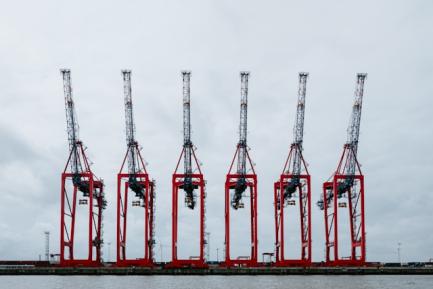
Economic situation in the Valencia province six months after the floods
The recovery of economic activity in the area is proving to be uneven: while spending by residents has quickly normalised, commercial activity is progressing at a slower pace, with a significant number of business establishments still inactive. In addition, the impact has varied widely depending on the municipality, the level of household income and the size of the business in question.
Last April marked six months since the floods that hit the province of Valencia. Throughout this period, at CaixaBank Research we have been monitoring the pattern of consumption in the area hardest hit.1,2 On this occasion, in order to make an assessment of the economic recovery, we have expanded our analysis using aggregated and anonymised CaixaBank data.3
- 1See the initial assessment of the economic impact in the Focus «Economic impact of the floods in the Valencia province» in the MR12/2024 and the subsequent monitoring through our consumption tracker.
- 2Ground zero includes the 15 municipalities hardest hit by the floods (Alaquàs, Albal, Aldaia, Alfafar, Algemesí, Benetússer, Beniparrell, Catarroja, Chiva, Llocnou de la Corona, Massanassa, Paiporta, Picanya, Sedaví and Utiel).
- 3Including in-person card spending, online card purchases and cash withdrawals.
Taking stock: consumption tracker, six months later
During the course of these six months, the area hardest hit by the floods has experienced a two-speed recovery. If we look at residents in the epicentre, in the days following the floods (from 30 October to 5 November) their consumption spending fell 47% relative to the same days in the previous year. However, as we can see in the first chart, the recovery was rapid and, one month later, the growth rate of spending by residents in this area exceeded the average for the rest of the country, probably due to replenishment needs. Throughout these six months, this trend has remained constant.

From the point of view of the business establishments in this same area, the impact was much more intense: between 30 October and 5 November, the turnover of those located in ground zero was 83% lower than in the same period of the previous year. Moreover, as we can see in the second chart, the level of spending carried out in the establishments within this area still lies below that of a year ago. Thus, the recovery in consumption of the inhabitants of ground zero is not being reflected in the turnover of the businesses in that area. One possible explanation for this pattern could be the high number of businesses that had not yet reopened their doors. In April, the number of active business establishments in ground zero remained 20% below the pre-flood period.4 The differences by sector are stark, as while the number of active businesses in the transport sector is 15% lower, this figure rises to 25% in the case of retail trade.
- 4
An active business establishment is defined as one which has recorded payment transactions with cards issued by CaixaBank. The reference period prior to the floods spans from 1 to 28 October. Includes new business establishments.

The differential impact of the floods by municipality
The initial impact of the floods across the different municipalities of the affected area was not even, and neither is the recovery. The first two columns of the first table show the pattern of inhabitants’ consumption and that of spending carried out in the business establishments of each municipality. As we can see, an increase in the consumption of a given municipality’s inhabitants does not necessarily equate to higher turnover in its establishments. This is the case for Alfafar and Sedaví, where their inhabitants’ consumption has grown in excess of 20% year-on-year in April, while the turnover of their business establishments remains below that of the same month last year. This is linked to the impact the floods had on the business sector: in many of these areas, the percentage of active business establishments has fallen.

The impact the floods had on the business sector in these areas is directly reflected in the consumption patterns of their inhabitants. As we can see in the second table, in the vast majority of the affected municipalities, the proportion of consumption that residents carry out within the same municipality has reduced. This is particularly the case for Paiporta, where the proportion of consumption that is carried out within the municipality has fallen by 7.6 pps.

The differential impact of the floods on the inhabitants and businesses of ground zero
Internal CaixaBank data also allow us to focus more specifically on the pattern of consumption among the affected areas’ inhabitants and on the turnover of the businesses according to their characteristics. In the case of residents’ spending, those with lower incomes were the ones most affected by the floods, as their consumption fell by as much as 82%, compared to a drop of 40% among those with the highest incomes. On the other hand, the pace of the recovery in consumption has been similar across all income segments: between December and April, consumption by low-income residents rose by 19% year-on-year on average, which is only slightly above the 16% increase recorded among high-income residents.

As for businesses, the impact of the floods has also been uneven, depending on their size. On the one hand, large corporations weathered the storm better: their turnover fell 85% in the days after the floods, but in April their turnover was just 3% below that of last year. In the case of small businesses, their turnover in the days after the floods was down 98% – a much bigger drop than that experienced by large corporations. In addition, in April the turnover of small businesses was still 21% below that of the same period last year.
At CaixaBank Research, we believe in the importance of providing quality economic information that is accessible to all. For this reason, we will continue to track the evolution of consumption in the area most affected by the floods in our consumption tracker.



